 Backend Development
Backend Development
 PHP Tutorial
PHP Tutorial
 Detailed examples of code implementation using the combination of Apache and PHP
Detailed examples of code implementation using the combination of Apache and PHP
Detailed examples of code implementation using the combination of Apache and PHP
This article mainly shares with you the code implemented by combining Apache and PHP, hoping to help everyone.
Apache and PHP combination
Configure httpd to support PHP
ServerName
Require all denied
AddType application/x-httpd-php .php //Parse PHP
DirectoryIndex index.html index.php
[root@shuai-01 ~]# vim /usr/local/apache2.4/conf/httpd.conf
Modify
Find the ServerName line, uncomment
ServerName www.example.com:80
Find Require all,
<Directory />
AllowOverride none
Require all granted
</Directory>
Require all grantedFind
AddType application/x-compress .Z
AddType application/x-gzip .gz .tgz
Add
AddType application/x-httpd-php .php
Find
<IfModule dir_module>
DirectoryIndex index.html
</IfModule>Add to
<IfModule dir_module>
DirectoryIndex index.html index.php
</IfModule>Check whether there is an error in the configuration file syntax
[root@shuai-01 ~]# /usr/local/apache2.4/bin/apachectl -t Syntax OK
Reload the configuration file
[root@shuai-01 ~]# /usr/local/apache2.4/bin/apachectl graceful
Configuration successful
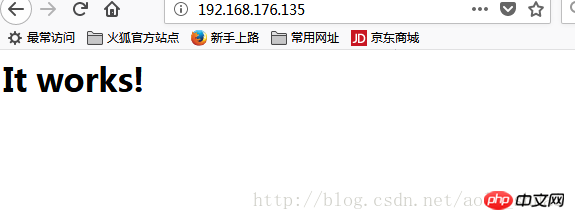
Accessing PHP is actually accessing (/usr
/local/apache2.4/htdocs/*.php) 在该目录下写一个1.php 文
file
[root@shuai-01 ~]# vi /usr/local/apache2.4/htdocs/1.php <?php phpinfo(); ?>
After saving and exiting, start visiting

The page that can explain 1 is successful, and the page source code that cannot be explained

Troubleshooting of unexplained problems
1, Check whether the PHP5 module is loaded
[root@shuai-01 ~]# /usr/local/apache2.4/bin/apachectl -M

2, It is not loaded Module, check if there is a module file
[root@shuai-01 ~]# ls /usr/local/apache2.4/modules/libphp5.so /usr/local/apache2.4/modules/libphp5.so
3, check if the configuration file has loaded libphp5.so configuration
[root@shuai-01 ~]# vim /usr/local/apache2.4/conf/httpd.conf LoadModule php5_module modules/libphp5.so
4, check if there is
added in the configuration file AddType application/x-httpd-php .php
Question 1:
Apache service may return some errors when opening the service

Write the configuration file (/ usr/local/apache2.4/conf/httpd.conf):
Find the ServerName line and uncomment it
ServerName www.example.com:80
Question 2:
Apache service may cause some errors when opening it
/usr/local/apache2.4/bin/apachectl: 行 79: 3519 段错误 $HTTPD -k $ARGV

LoadModule php5_module modules/libphp5.so #LoadModule php7_module modules/libphp7.so
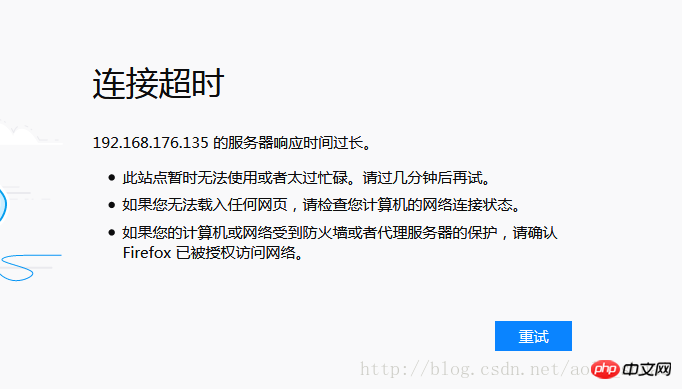
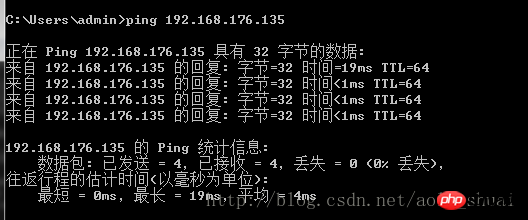 The IP is connected, and then check if port 80 is open
The IP is connected, and then check if port 80 is open
##Because Windows The Telnet client is not opened Open the client
Open the client
Control Panel-Programs-Turn Windows features on or off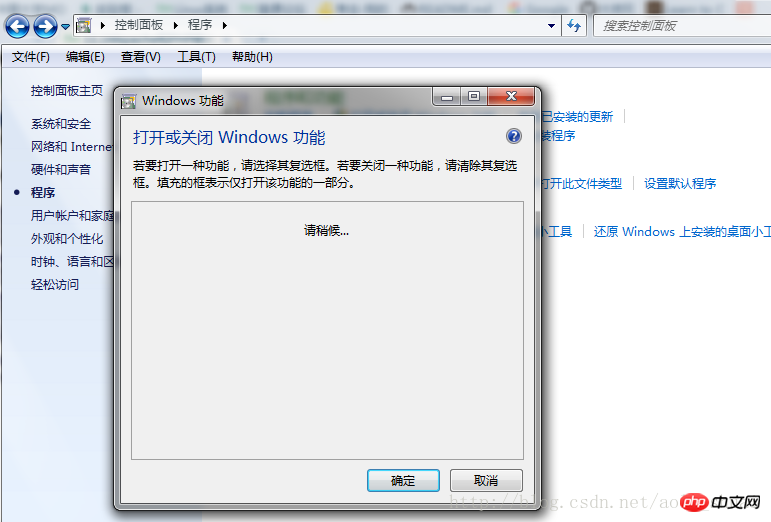
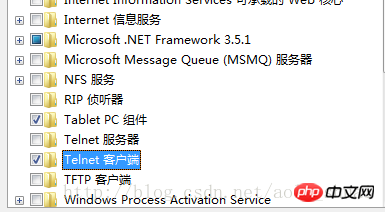 This is it. Telnet, but it doesn’t work (the server has no rules for iptables)
This is it. Telnet, but it doesn’t work (the server has no rules for iptables)
 Add rules in linux
Add rules in linux
[root@shuai-01 ~]# iptables -I INPUT -p tcp --dport 80 -j ACCEPT
 Related recommendations:
Related recommendations:
Apache and PHP installation How to implement multi-website domain name binding in Apache2
The above is the detailed content of Detailed examples of code implementation using the combination of Apache and PHP. For more information, please follow other related articles on the PHP Chinese website!

Hot AI Tools

Undresser.AI Undress
AI-powered app for creating realistic nude photos

AI Clothes Remover
Online AI tool for removing clothes from photos.

Undress AI Tool
Undress images for free

Clothoff.io
AI clothes remover

Video Face Swap
Swap faces in any video effortlessly with our completely free AI face swap tool!

Hot Article

Hot Tools

Notepad++7.3.1
Easy-to-use and free code editor

SublimeText3 Chinese version
Chinese version, very easy to use

Zend Studio 13.0.1
Powerful PHP integrated development environment

Dreamweaver CS6
Visual web development tools

SublimeText3 Mac version
God-level code editing software (SublimeText3)

Hot Topics
 1386
1386
 52
52
 PHP and Python: Comparing Two Popular Programming Languages
Apr 14, 2025 am 12:13 AM
PHP and Python: Comparing Two Popular Programming Languages
Apr 14, 2025 am 12:13 AM
PHP and Python each have their own advantages, and choose according to project requirements. 1.PHP is suitable for web development, especially for rapid development and maintenance of websites. 2. Python is suitable for data science, machine learning and artificial intelligence, with concise syntax and suitable for beginners.
 How to set the cgi directory in apache
Apr 13, 2025 pm 01:18 PM
How to set the cgi directory in apache
Apr 13, 2025 pm 01:18 PM
To set up a CGI directory in Apache, you need to perform the following steps: Create a CGI directory such as "cgi-bin", and grant Apache write permissions. Add the "ScriptAlias" directive block in the Apache configuration file to map the CGI directory to the "/cgi-bin" URL. Restart Apache.
 The Enduring Relevance of PHP: Is It Still Alive?
Apr 14, 2025 am 12:12 AM
The Enduring Relevance of PHP: Is It Still Alive?
Apr 14, 2025 am 12:12 AM
PHP is still dynamic and still occupies an important position in the field of modern programming. 1) PHP's simplicity and powerful community support make it widely used in web development; 2) Its flexibility and stability make it outstanding in handling web forms, database operations and file processing; 3) PHP is constantly evolving and optimizing, suitable for beginners and experienced developers.
 How to start apache
Apr 13, 2025 pm 01:06 PM
How to start apache
Apr 13, 2025 pm 01:06 PM
The steps to start Apache are as follows: Install Apache (command: sudo apt-get install apache2 or download it from the official website) Start Apache (Linux: sudo systemctl start apache2; Windows: Right-click the "Apache2.4" service and select "Start") Check whether it has been started (Linux: sudo systemctl status apache2; Windows: Check the status of the "Apache2.4" service in the service manager) Enable boot automatically (optional, Linux: sudo systemctl
 How to delete more than server names of apache
Apr 13, 2025 pm 01:09 PM
How to delete more than server names of apache
Apr 13, 2025 pm 01:09 PM
To delete an extra ServerName directive from Apache, you can take the following steps: Identify and delete the extra ServerName directive. Restart Apache to make the changes take effect. Check the configuration file to verify changes. Test the server to make sure the problem is resolved.
 PHP: Handling Databases and Server-Side Logic
Apr 15, 2025 am 12:15 AM
PHP: Handling Databases and Server-Side Logic
Apr 15, 2025 am 12:15 AM
PHP uses MySQLi and PDO extensions to interact in database operations and server-side logic processing, and processes server-side logic through functions such as session management. 1) Use MySQLi or PDO to connect to the database and execute SQL queries. 2) Handle HTTP requests and user status through session management and other functions. 3) Use transactions to ensure the atomicity of database operations. 4) Prevent SQL injection, use exception handling and closing connections for debugging. 5) Optimize performance through indexing and cache, write highly readable code and perform error handling.
 How to connect to the database of apache
Apr 13, 2025 pm 01:03 PM
How to connect to the database of apache
Apr 13, 2025 pm 01:03 PM
Apache connects to a database requires the following steps: Install the database driver. Configure the web.xml file to create a connection pool. Create a JDBC data source and specify the connection settings. Use the JDBC API to access the database from Java code, including getting connections, creating statements, binding parameters, executing queries or updates, and processing results.
 How to view your apache version
Apr 13, 2025 pm 01:15 PM
How to view your apache version
Apr 13, 2025 pm 01:15 PM
There are 3 ways to view the version on the Apache server: via the command line (apachectl -v or apache2ctl -v), check the server status page (http://<server IP or domain name>/server-status), or view the Apache configuration file (ServerVersion: Apache/<version number>).



